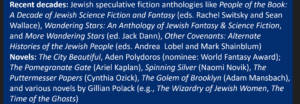This is the year of many confluences. I want to note just three, because those earlier in the year were more confluences of grief and do not need revisiting.
The first one is tomorrow, that is to say, November 5.
First, there is the US election. I am hoping that the US turns out and votes in massive numbers and that the outcome is one of the better ones. This is not an easy election and I’m very glad I don’t have to deal with some of the issues everyone’s handling right now. I hope things improve and that clever voting opens the door to US lives being significantly better. I also hope that the idiots learn to listen and understand what rampant fools they can be, but this is probably a pipe dream.
The election is, obviously, the biggest thing tomorrow. The second biggest is a rather fraught historical memory. Australia mostly doesn’t celebrate Guy Fawkes Night any more, but I found out yesterday that New Zealand does. We never burned figures, even when we had bonfires and fireworks and for this I am so very grateful. I have to admit that it’s kinda appropriate that there is a history memory on the same day that the US is busy creating its own history memory.
The third thing tomorrow is a race. Not the same type of race as the US one, but a horse race. Victoria (the Australian state, not the city a long way from me) gets a public holiday and most of Australia stops to watch. Tomorrow I won’t, because the friends I usually drink with (because it’s a drinking festival, really) are busy and I have a lot to do and…
I feel as if I’m betraying my childhood with no race and no fireworks, but at least I don’t have to worry about supporting something that really is not kind to horses or an historical event that, in the way it’s celebrated, isn’t that kind to Catholics.
That’s tomorrow’s confluence: the election, Bonfire Night, and the Melbourne Cup.
The next one is on November 11. I might leave it until next week and tell you about it then. Let me just say that only one of the events that collide is celebrated in the US and the UK. Watch this space…
The other collision is a bit longer. December 25 is Christmas this year (as it always is) and, for a wonder, it’s also the start of Chanukah, thanks to a handy leap month last Jewish year. New Year is also Chanukah. So are all the days between the two. I feel it’s a bit of a cheat to call this a confluence, but it’s a fun one because it’s going to tangle all the folks who were finally accepting that Chanukah and Christmas are not on the same dates. The Christian calendar is solar and fixed to the sun. The Jewish calendar is lunar/solar, that is fixed to the moon with solar adjustments. This explains the leap month – the adjustments are a bit bigger because, really, the Moon and the Sun don’t talk to each other and make everything work in harmony.
The shape of the year gives you something to think about if you really, really don’t want to spend more thoughts on the election. The fact that I’m supposed to be frying food in midsummer (for Chanukah) is another useful distraction.
Good luck with your Tuesday confluence!




 ale or whatever passed for it). I grew up in the era of folk music, where almost everyone I knew had a guitar, banjo, recorder, or equivalent instrument. Maybe a dulcimer, castanets, or lap harp. Sure, we went to concerts, but we made our own music, too. For the last couple of centuries, folks who could afford it had a harpsichord, clavichord, pianoforte, as well as a harp (ref. any Jane Austen novel or film). Composers wrote for their patrons (or their patrons’ families), music simple enough for an amateur to enjoy playing. Even with the shift through recorded media to professional concert music (everything from symphonies to metallica), folks continue to enjoy playing music. Perhaps it’s a bug they catch in high school band or orchestra. Perhaps their moms forced them into piano or clarinet lessons and they found themselves wanting to play long after lessons went by the wayside.
ale or whatever passed for it). I grew up in the era of folk music, where almost everyone I knew had a guitar, banjo, recorder, or equivalent instrument. Maybe a dulcimer, castanets, or lap harp. Sure, we went to concerts, but we made our own music, too. For the last couple of centuries, folks who could afford it had a harpsichord, clavichord, pianoforte, as well as a harp (ref. any Jane Austen novel or film). Composers wrote for their patrons (or their patrons’ families), music simple enough for an amateur to enjoy playing. Even with the shift through recorded media to professional concert music (everything from symphonies to metallica), folks continue to enjoy playing music. Perhaps it’s a bug they catch in high school band or orchestra. Perhaps their moms forced them into piano or clarinet lessons and they found themselves wanting to play long after lessons went by the wayside.